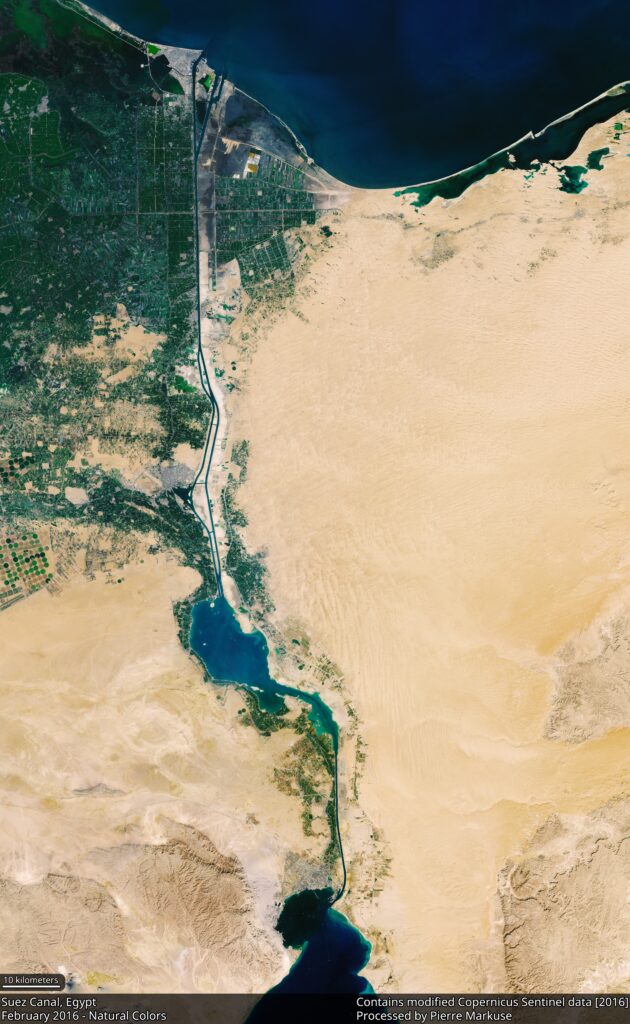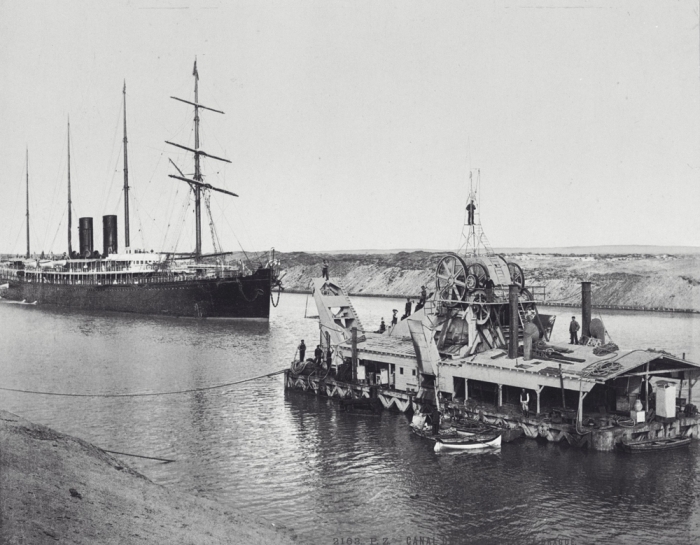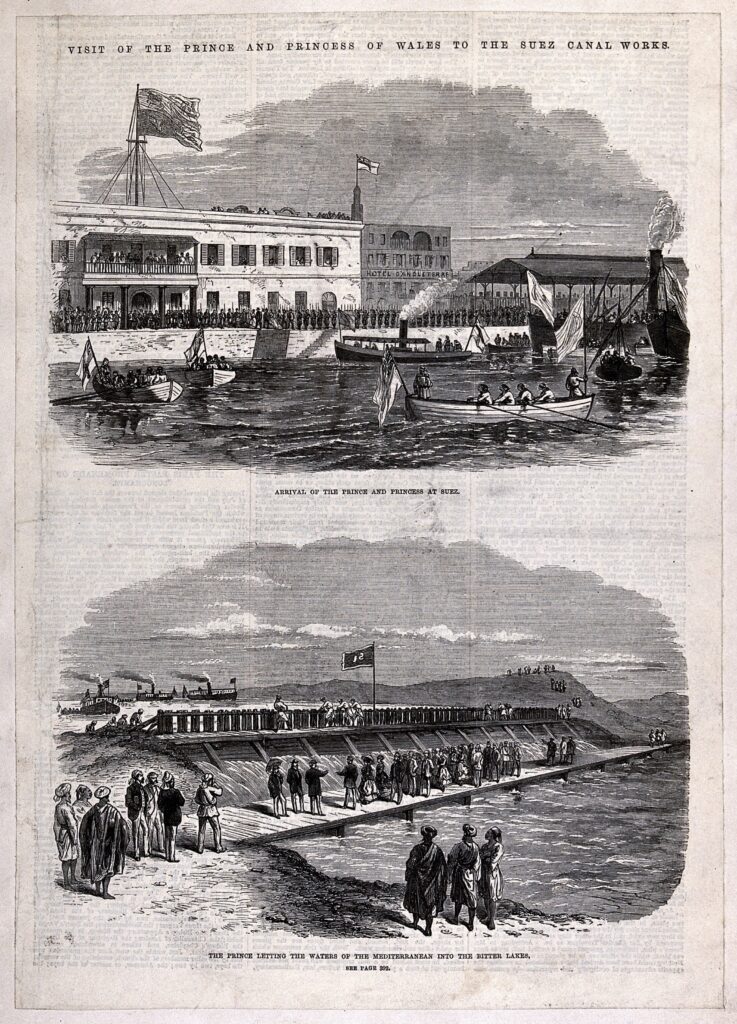
By Pierre Markuse from Hamm, Germany
Suez Canal, Egypt, CC BY 2.0, https://commons.wikimedia.org/w/index.php?curid=97214406
Technically the Suez Canal is an artificial sea-level waterway that connects the Mediterranean Sea and the Red Sea through the Isthmus of Suez, a narrow strip of land that separates Africa from Asia. But its story is much grander than that. It provides the shortest maritime route between Europe and the lands which surround the Indian and western Pacific oceans.
In so doing, the mighty canal reduced the journey distance from the Arabian Sea to London by approximately 5,500 miles. The trip could be made in a previously unthinkable 10 days at 20 knots or 8 days at 24 knots.
And today we mark the anniversary of its opening.
The idea of building a canal across the Isthmus of Suez dates back to ancient times, when the Pharaohs of Egypt constructed a series of canals to link the Nile River with the Red Sea. These canals, however, were typically short-lived. Frequently abandoned or destroyed by natural or human causes, the last one was closed in the 8th century AD.
The modern project of the Suez Canal was initiated by Ferdinand de Lesseps, a French diplomat and engineer. In 1854, M. De Lesseps obtained a concession from the Ottoman viceroy of Egypt — Muhammad Ali Pasha — to create a company for the construction and operation of the canal. The Suez Canal Company was formed in 1858, with shareholders from France, Britain, and Egypt. Work on the canal began on April 25, 1859.

By Unknown author
Scanned from engraving in “Appleton’s Journal of Popular Literature, Science, and Art”, 1869., Public Domain, https://commons.wikimedia.org/w/index.php?curid=16707
The construction of the canal lasted 10 years, during which time political, financial, contractual, and physical problems buffeted the project but were eventually overcome. The canal was dug by a workforce of about 1.5 million people, most of whom were Egyptian peasants. They labored under harsh conditions and suffered from diseases, accidents, and high mortality rates. The canal also faced strong political opposition from the British government, which feared that it might threaten its colonial interests and naval supremacy in the region.
The canal was officially opened 154 years ago today on November 17, 1869. A grand ceremony was held, attended by the Khedive (Turkish viceroy) of Egypt — Ismail Pasha — and the Empress of France — Eugénie de Montijo — among other dignitaries and guests. The first ship to pass through the canal was the French imperial yacht L’Aigle, followed by a convoy of 68 vessels from various countries.

By Tropenmuseum, part of the National Museum of World Cultures,
CC BY-SA 3.0
https://commons.wikimedia.org/w/index.php?curid=20353794
The Suez Canal was a remarkable achievement of engineering and diplomacy, which has had a profound impact on the world economy, politics, and culture. It has facilitated the trade and movement of goods, people, and ideas between Europe, Asia, and Africa. It stimulated the development of new industries, markets, and regions. It also became a strategic asset and a source of conflict for the countries that controlled or sought to control it, especially Egypt, Britain, and France. The canal has witnessed several wars and crises, such as the Suez Crisis of 1956, the Six-Day War of 1967, the Yom Kippur War of 1973, and the 2021 blockage which dramatically affected the global shipping and oil industries.
Today, the Suez Canal is owned and operated by the Suez Canal Authority, an Egyptian state-owned entity. It remains one of the busiest and most important waterways in the world. In 2021, more than 20,600 vessels traversed the canal, carrying about 12% of the world’s trade volume and generating about $5.6 billion in revenue for Egypt. The canal was also expanded and modernized in 2015, with the addition of a second 22-mile-long shipping lane along part of the main waterway, increasing the canal’s capacity and efficiency.

Courtesy of Wellcome Images, Wellcome Library, London
https://wellcomeimages.org/indexplus/image/V0024393.html
Wellcome Collection gallery (2018-03-28): CC-BY-4.0, CC BY4.0
https://commons.wikimedia.org/w/index.php?curid=36568673
So there you have it. The Suez Canal is a testament to the kind of human ingenuity, ambition, and perseverance that has shaped our modern world. It is also a focal point of the cooperation, competition, and conflict that characterize the relations among nations and regions. It well deserves to be celebrated and studied as a remarkable achievement of engineering and history.
By Steven Roberts


